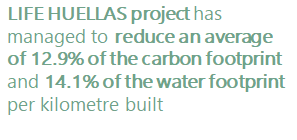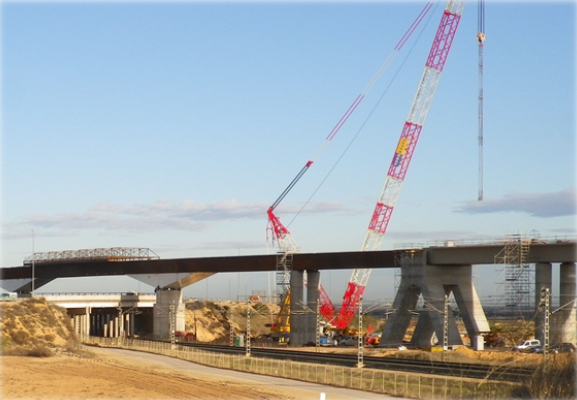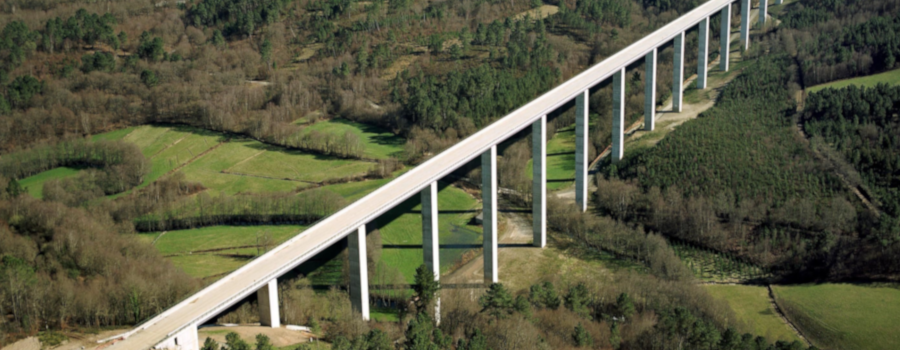The importance of the train from an economic point of view is beyond dispute. It emerged as one of the most extraordinary innovations in the Industrial Revolution, because although it is true that the first steam locomotives had already been created before, it was during this period when the potential of this new means of transport could be seen.
Over the years, it has become one of the preferred means of transport for citizens, because of its safety and speed, only surpassed by the airplane. Furthermore, in contrast to the use of private vehicles, rail service contributes to fuel economy per passenger and is therefore more sustainable than other means of transport.
According to data from ADIF (Administrator of Railway Infrastructures), in Spain a train passenger consumes 5 times less litres of petrol equivalent per kilometre than traveling by car, and 20 times less than traveling by airplane. Or, for example, transporting one tonne of goods by rail consumes 4 times less litres of petrol equivalent than by road, and 1,380 times less than by air.
But, what about the construction of the railway infrastructure necessary for the movement of trains? Is it sustainable?

This was the premise of the LIFE HUELLAS project, led by CARTIF, together with the companies Vias y Construcciones and IK-Ingeniería and the University of Granada. Its objective was to improve the construction process of railway tracks in terms of their environmental impact, with special emphasis on those aspects that affect climate change.
It should be borne in mind that the railway infrastructure is made up of civil works such as bridges, viaducts, tunnels and service roads, and of the superstructure, made up of rails, sleepers, fastening material, and electrification, signalling and track safety installations. The production, construction and maintenance of all this infrastructure has a high environmental impact.
The LIFE HUELLAS consortium considered that life cycle assessment techniques, combined with intelligent data analysis, could help reduce the carbon and water footprint of railway infrastructure works by 10% and 5% respectively.
After four and a half years of intensive work, the project has managed to reduce an average of 12.9% of the carbon footprint and 14.1% of the water footprint per kilometre built in the works that have been used as pilots, i.e. better results than expected. Quite a success.

The project began with an exhaustive collection of basic information to analyse the environmental impact of the construction of railway networks, based on previously identified variables. Later, participating companies focused their efforts on studying the transformation of environmental impact into carbon and water footprints, through the development of a consolidated assessment methodology.
From this compilation, a smart tool will establish different planning alternatives applying computational intelligence techniques and showing specific values of footprint and previously selected environmental indicators. That is to say, the objective is to help in the decision-making process during the planning phase of the works.
Furthermore, the research team has developed a free online tool that provides a detailed environmental diagnosis of the processes involved in the construction of this type of infrastructure. This tool, available on the project website www.life-huellas.eu, allows the development of railway projects with not only economic, but also environmental and social criteria.
For the development of both tools, the consortium has exhaustively studied more than 460 project units and a collection of relevant sustainability variables and indicators, grouped in:
- Environmental indicators: carbon and water footprint, acidification potential, photochemical oxidation and eutrophication.
- Social indicators: improving working conditions, health and safety, human rights, governance, community infrastructure and job creation.
- Economic indicators: project costs.
Tests were carried out during the demonstration phase of the project in two real works; on the one hand, the Ponte Ambía (Orense)-Taboadela (Orense) section of the Madrid-Galicia high speed line for the track infrastructure, that is for the earthworks (embankments, trenches, tunnels, etc.) and for the factory works (bridges, drainage, viaducts and level crossings); and on the other hand, the Antequera (Málaga)-Loja (Granada) section, for the track superstructure over which the trains run, whose main elements are ballast, sleepers, rail, electrification and signalling.
With the aim of contributing to these processes in terms of sustainability, the consortium has compiled in a guide of Good Practices the main conclusions of the experience acquired during the development of the project, as well as the different sustainable alternatives proposed.
Although LIFE HUELLAS project has already been completed, railway works on which it has been validated have effectively reduced the carbon and water footprint of their construction phase, contributing to the environmental improvement.
In addition, free access to the calculator will remain available at www.life-huellas.eu for anyone to use. You can also find us at networking and dissemination events, transferring gained knowledge, since the objective now is to promote replicability by communicating obtained results to other companies and sectors. For example, many of the railway infrastructure construction operations are common to those that build other infrastructures, such as roads, so they can also benefit from the results of the project.
- Why monitoring rural territories - 28 March 2025
- Monitoring the Effect of Cultural and Natural Heritage as a Driver for Rural Regeneration - 8 April 2022
- Building railway infrastructure with less pollution - 25 May 2018
